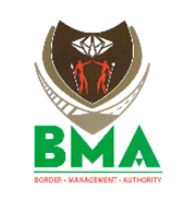- within Consumer Protection topic(s)
It is a well-known fact that counterfeit and illicit goods trade is causing an immeasurable harm to an already struggling South African economy. In 2019, his excellence President Cyril Ramaphosa in particular acknowledged the severe negative impact that this phenomenon has on the local economy and pledged that government would do more in an attempt to address the importation and smuggling of counterfeit and illicit goods into the country.
In this regard, in 2020 and in an attempt to create a more efficient process for overall border control and reduce the corruption element, the Border Management Authority ("BMA") Act was signed into law. The BMA seeks to eradicate several challenges currently experienced within the border management environment due to the existing fragment model and provide a single authority to oversee all forms of border management control. The BMA model will be implemented at land, air and seaports of entry. The proposed BMA model is expected to create a platform for proper coordination between different Government Departments such as the South African Police Service, the South African Revenue Service, Department of Home Affairs (Immigration), South African Defense Force, to work together in an attempt to clamp down on, inter alia, the importation of counterfeit and illicit goods and facilitate improved movement of people and goods.
The roll out process of the BMA is currently underway and the Minister of Trade, Industry and Competition has now, in terms of Section 15(1) of the Merchandise Marks Act no. 17 of 1941 ("the MMA"), included the below BMA logo as part of "the prohibited marks" under the provisions of MMA:

This in effect prohibits the unauthorised use of the BMA logo as depicted above, or of a similar mark, which may cause confusion in relation to any trade, business, profession, occupation, event, or in connection with any trade mark, mark or trade description applied to goods, unless where such use is authorized by the Department of Home Affairs.
Furthermore, no person or entity may apply for proprietorship of the BMA logo as a trade mark in terms of the Trade Marks Act No. 194 of 1993 ("TMA"), which specifically prohibits such a registration in terms of Section 10(10) of the TMA. However, proprietors of identical or similar trade marks already registered and/or in use prior to the date of this notice will not be affected by this prohibition.
This development is welcomed and indeed a positive step in the direction to a successful implementation of the BMA program, which will hopefully significantly aid in the streamlining of the border control. Once implemented, the proposed BMA model is likely to bring about culture change, improve law enforcement at border environment, minimize cross-border criminality and potentially address many other practical challenges currently experienced.
The content of this article is intended to provide a general guide to the subject matter. Specialist advice should be sought about your specific circumstances.
[View Source]

